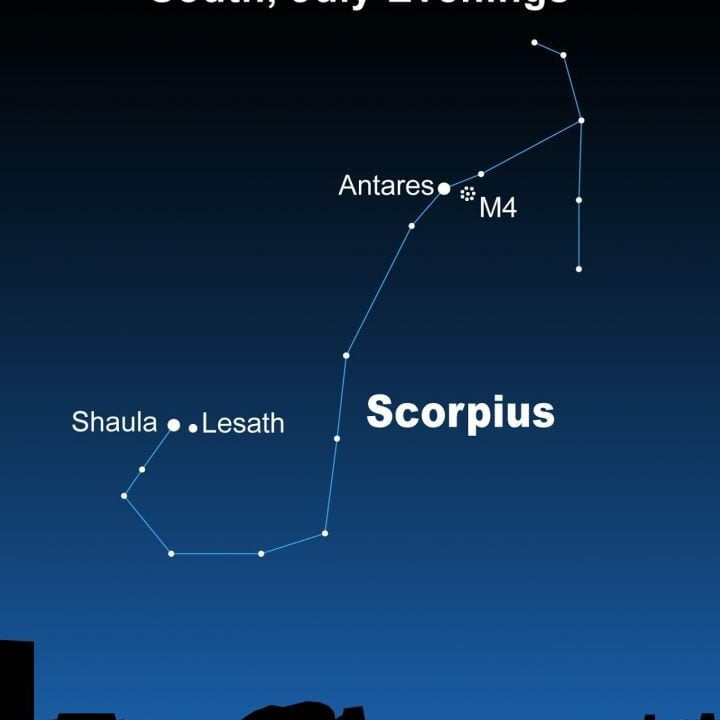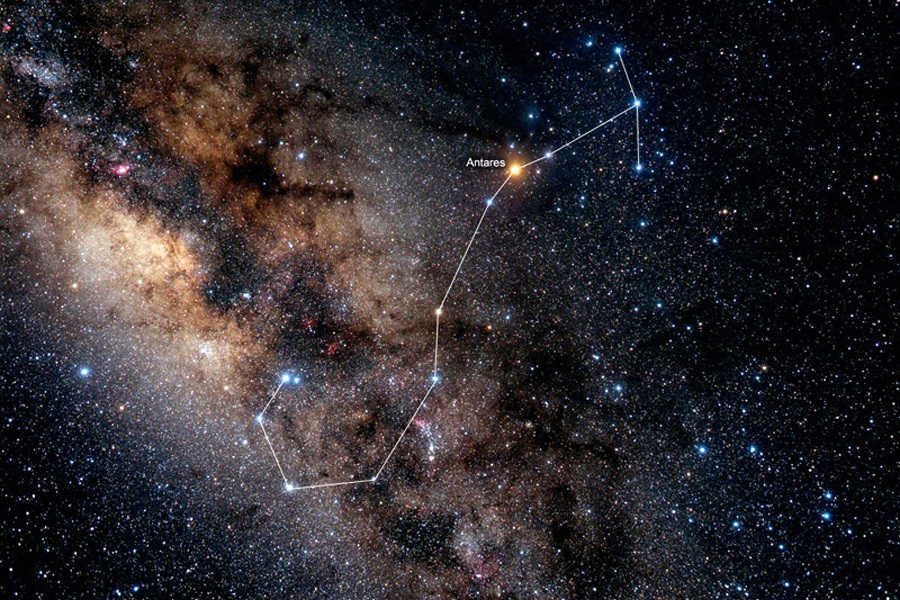
- Constellations
Scorpio is a constellation situated in the southern sky that depicts a scorpion. It is one of the zodiacal constellations, which were first documented by Ptolemy in the second century. The constellation Scorpio predates the Greeks and has a history that dates back 5000 years to ancient Babylon, where it was known as GIR-TAB (scorpion). It is located near the center of the Milky Way, making it easy to find.
Locating the Scorpius constellation in the celestial sphere
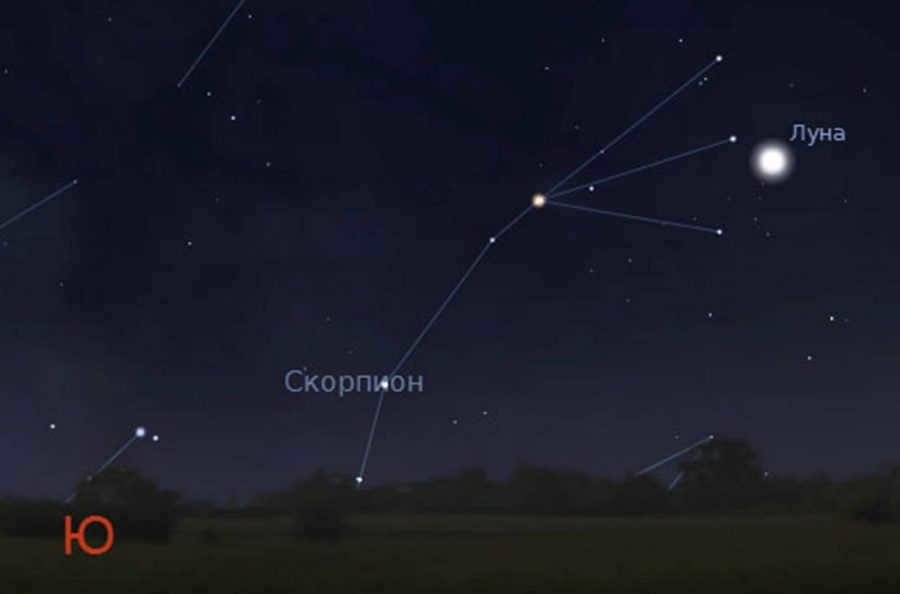
Due to its position in the southern hemisphere, the constellation Scorpius is not visible at a high altitude above the horizon. In regions with moderate latitudes, the primary star of the constellation, known as Antares, can be observed near its culmination, which is when it reaches its highest point above the horizon. At this time, it can be found precisely in the southern direction. The easiest way to locate Scorpio is by starting with the constellation Virgo, heading towards the southeast, and passing through Libra.
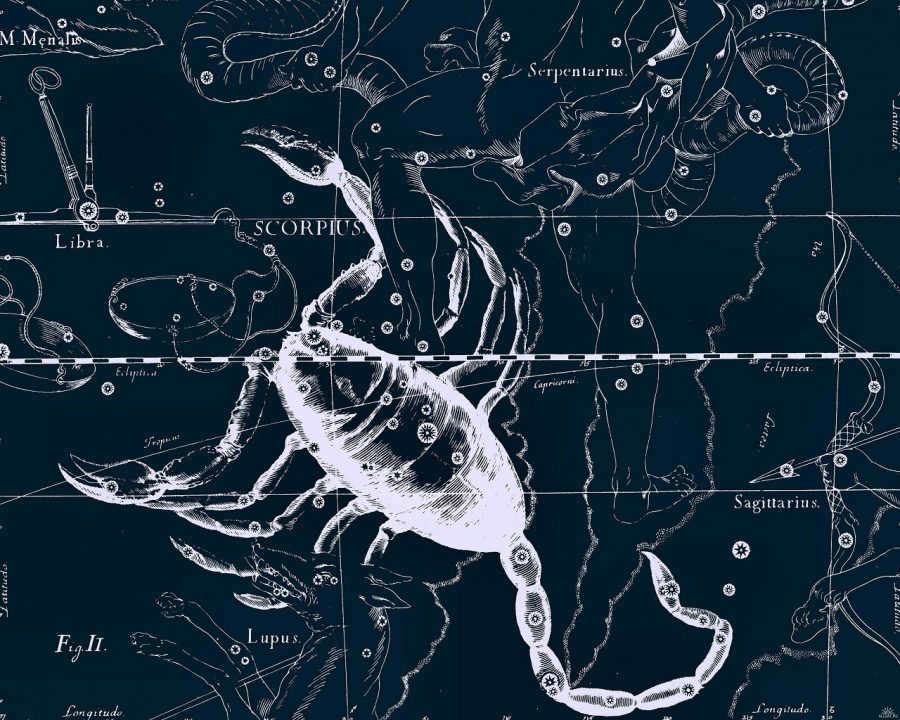
There are multiple renditions of the Scorpion legend, with the initial one being about Gaia, a Greek primordial deity symbolizing the Earth, who grew furious when a hunter named Orion sought to slay a bull. In retaliation, Gaia dispatched a scorpion to sting Orion and thwart his murderous intentions. In the celestial sphere, the Scorpio constellation is positioned directly opposite the Taurus and Orion constellations. As Scorpio ascends above the horizon, Orion descends below it, seemingly descending towards his demise.
As per another legend, Orion posed a threat to Artemis and her mother Leto, declaring that he would eradicate all the animals inhabiting our planet. This enraged them to such an extent that they dispatched a scorpion to engage in combat with Orion. With its deadly stinger, the scorpion successfully vanquished Orion, prompting Zeus to immortalize them both as celestial constellations, serving as a cautionary reminder to mortals on Earth of the consequences of hubris. An alternative version of this myth recounts Orion’s exceptional hunting prowess, surpassing even that of Artemis. Knowing that revealing this truth would upset her, Orion kept it to himself, which inadvertently led to Artemis developing romantic feelings for him. Upon learning of her affection, Artemis’ twin brother Apollo became incensed and dispatched a scorpion to assassinate Orion.
If we desire to comprehend the symbol of the Scorpion, we must be aware that there exists a sensual aspect to the legend in which Orion was enticed by the goddess of the dawn, Eos, and taken captive by her similar to numerous other young men. This provoked jealousy within Artemis, and in her fury, she dispatched another scorpion to sting Orion.
Stars of the Scorpio constellation
The Scorpius constellation contains 13 stars that have confirmed planets. The most radiant star within the constellation is Antares (Alpha Scorpio) with an apparent magnitude of 0.96. Antares is one of the most brilliant stars in the celestial sphere.
Alpha Scorpio, also known as Star Antares or α Scorpius
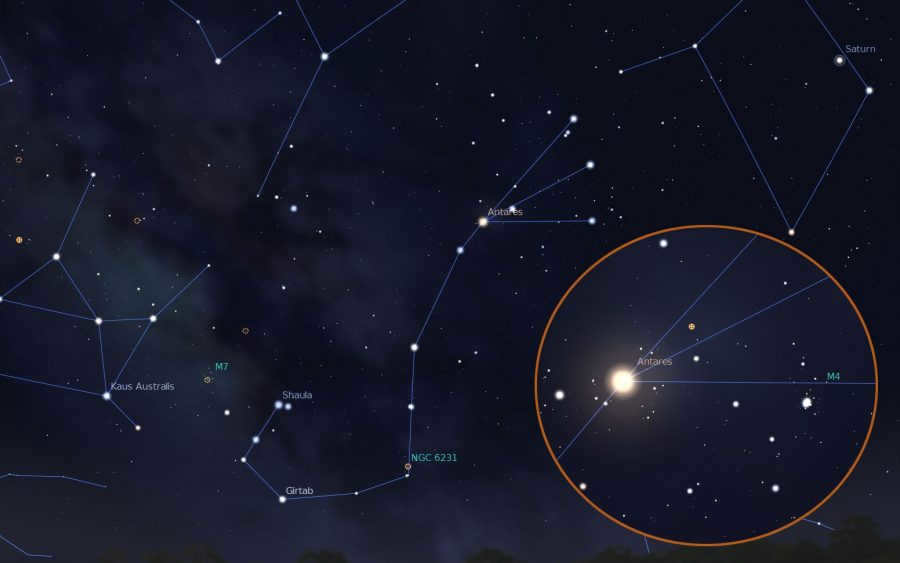
Antares, the red supergiant, has a visual magnitude of 0.96 and is situated approximately 550 light-years away from the Sun. It stands out as the most luminous star in the Scorpius constellation and ranks as the 16th brightest star in the night sky.
Antares falls under the spectral class M1.5lab-B and boasts a radius 883 times greater than that of the Sun. Its brightness surpasses the Sun’s by a factor of about 10,000. Moreover, Antares’ mass is estimated to be 15 to 18 times larger than that of our own star. Scientists believe that Antares is around 12 million years old.
The celestial body known as Shaula, or λ Scorpius (Lambda Scorpio), is a prominent star
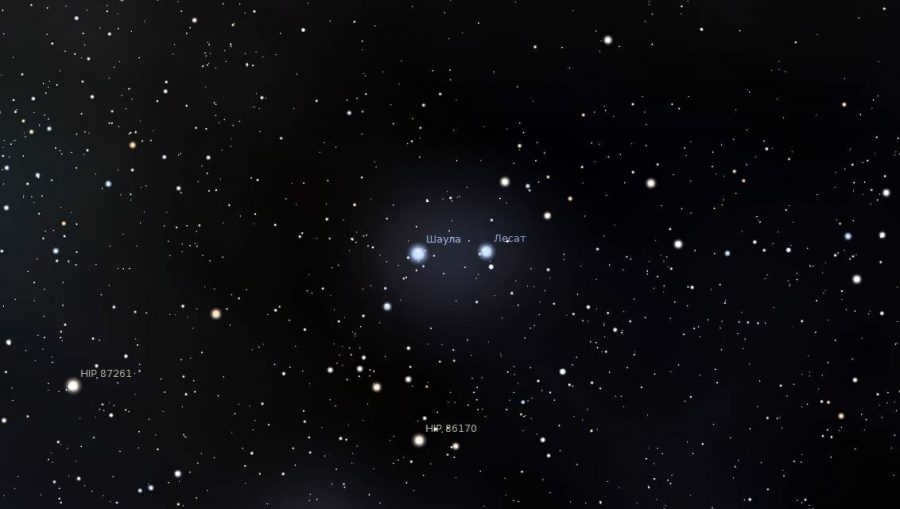
Shaula is the second brightest celestial body in the constellation Scorpius and the 25th brightest object in the night sky. It is positioned approximately 700 light-years away from our solar system.
The star Lambda Scorpius is part of a complex star system consisting of three observable components. These components are known as Lambda Scorpius A, Lambda Scorpius B, and Lambda Scorpius C.
The estimated age of this star system is around 10-13 million years. Lambda Scorpius is traditionally referred to as Shaula, a name derived from the Arabic term al-šawlā, which translates to “raised tail.”
The double star Beta Scorpius consists of two components, with the brighter component having an orbital period of 610 years.
Both components of this system are massive main-sequence stars belonging to spectral class B, with each star having a mass of at least 10 times that of the Sun. It is predicted that these stars will eventually end their lives with supernova explosions.
The star is traditionally known by the names Aqrab (Acrab, Elacrab) and Graffias. The name Aqrab comes from the Arabic word al-‘Aqrab, which translates to “Chinese Scorpion”. The star also shares the name Graffias with XI Scorpio, and it means “claws”.
Star Dshubba or δ Scorpio (Delta Scorpio)
Dshubba, also known as δ Scorpio or Delta Scorpio, is a prominent star in the constellation Scorpio. It is one of the brightest stars in the constellation and is located approximately 548 light-years away from Earth. Dshubba is a multiple star system, consisting of at least four stars. The primary star, Dshubba A, is a blue giant with a luminosity over 6,000 times that of the Sun. Its companion stars, Dshubba B, C, and D, are all smaller and cooler than the primary star. Dshubba is easily visible in the night sky and is an interesting object of study for astronomers.
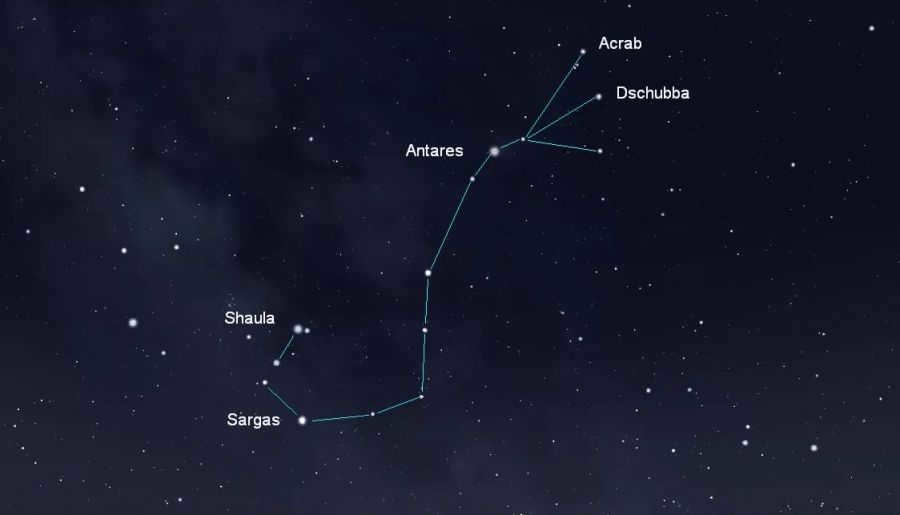
The star Delta Scorpio is classified as B0.3 IV. Dshubba is located approximately 490 light years away from our solar system. It has a visual magnitude of 2.307. This star has a companion in orbit with a period of 20 days, and it also has another companion star with a highly eccentric orbit that revolves around the main star every 10 years.
Dschubba, the traditional name of this star, comes from the Arabic word Jabhat, which means “forehead”. It is also sometimes referred to as Iklarkrau.
The Sargas Star or Theta Scorpio: A Celestial Wonder
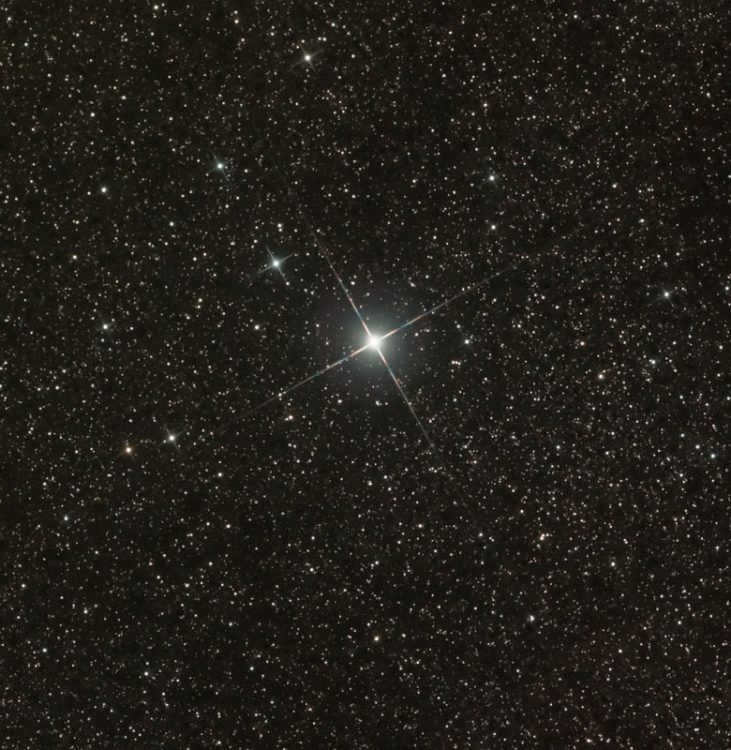
The star known as Theta Scorpius is a luminous giant star that has a yellow hue and is classified as type F0 II. It has an apparent magnitude of 1.87, making it easily visible to observers. Theta Scorpius is located at a distance of approximately 300 light years away from our solar system. This massive star has a mass equivalent to 5.7 times that of our Sun. In terms of size, it is a whopping 26 times larger than our Sun, and it shines with a brightness that is 1.834 times greater. This star is also known by the name Sargas, which has its origins in the Sumerian language. Unfortunately, the meaning behind this name remains a mystery.
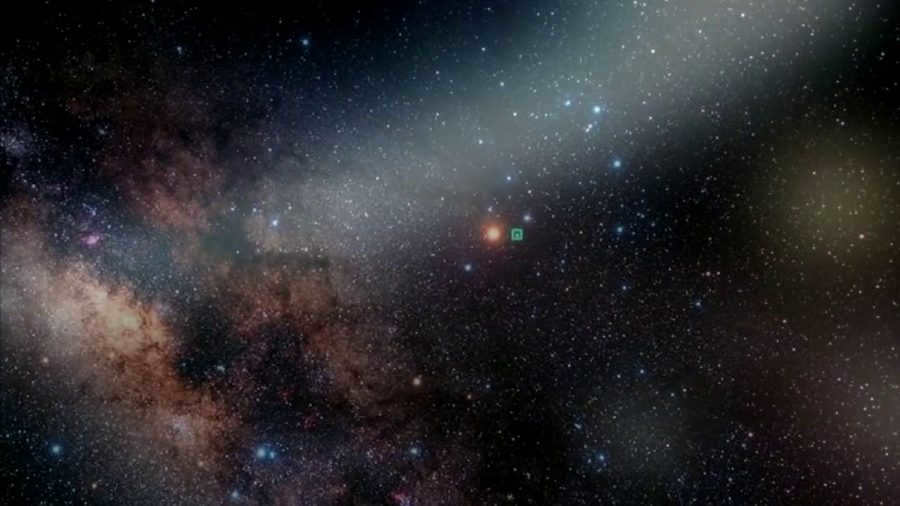
PSR B1620-26 is a binary star system that is located approximately 12,400 light-years away in the direction of Messier 4, which is a globular cluster situated in the constellation Scorpius. This star system is in close proximity to the cluster.
The PSR B1620-26 system is composed of a pulsar known as PSR B1620-26 A and a white dwarf referred to as PSR B1620-26 B. In the year 2000, astronomers discovered an exoplanet that orbits around these two stars.
The pulsar PSR B1620-26 possesses an incredibly high density and is compressed to a size of merely a few kilometers. Furthermore, it rotates at an astonishingly fast speed, completing approximately 100 rotations around its own axis every second. With each rotation, an electromagnetic pulse is emitted towards Earth. Slight variations in the intervals between these pulses indicate that the pulsar is in orbit around a white dwarf and a planet that is similar in size to Jupiter.
Curious entities within the constellation
Messier 4 (M4, NGC 6121) represents a globular cluster that boasts an apparent visual magnitude measuring 5.9 and resides at a distance of 7200 light-years. This cluster holds the distinction of being the initial one in which astronomers were able to discern individual stars. The most luminous members of this cluster exhibit an apparent magnitude of 10.8.
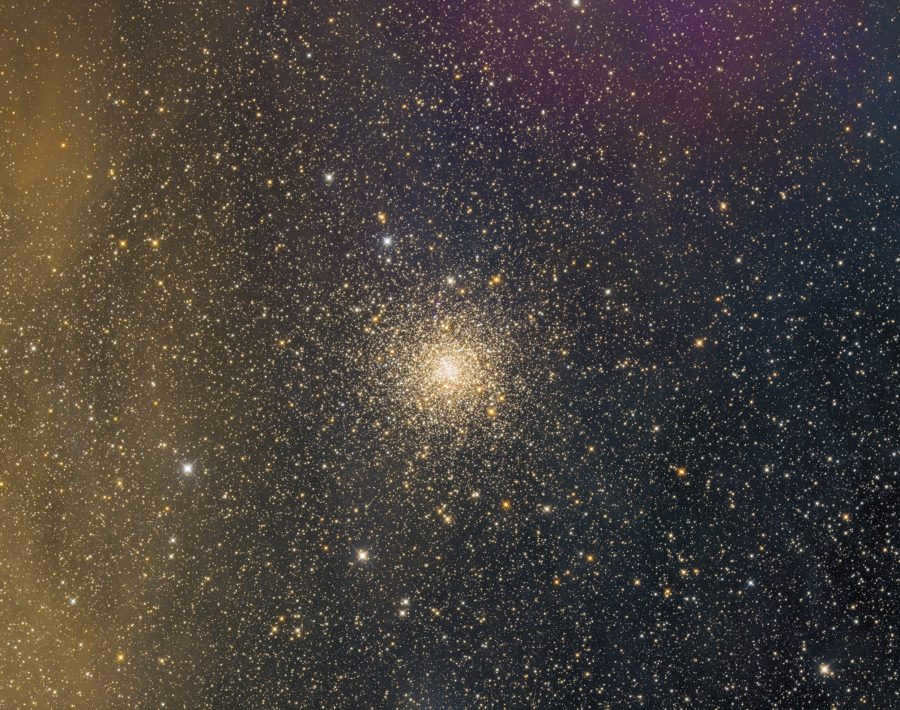
Stretching across a distance of 75 light-years, the constellation Scorpius is estimated to be 12.2 billion years old. It is located 1.Z degrees west of Antares and is the closest globular cluster to our system, along with NGC 6Z97.
Discovered in 1746 by Jean Philippe de Chéseau, Scorpius was later included in Messier’s catalog in 1764.
The Butterfly, also known as Messier 6 (M6) or NGC 6405, is an open cluster that shines with an apparent visual magnitude of 4.2. It is located at a distance of 1600 light-years. The cluster is dominated by blue B-class stars, but the most prominent star is the orange giant BM Scorpius.
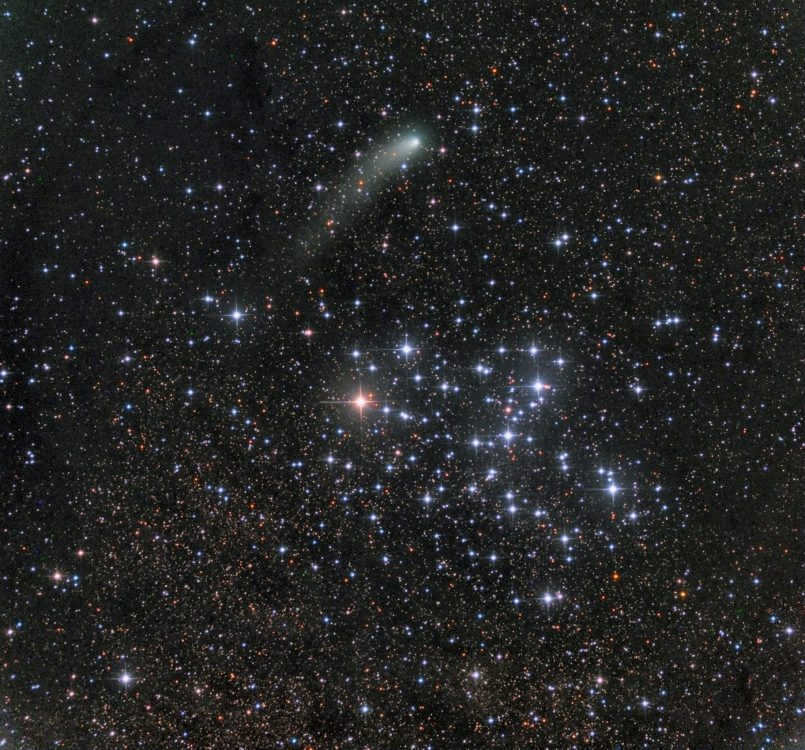
In 1654, Giovanni Batista Godierna made the discovery of the constellation Scorpius, which was later included in Messier’s catalog in 1764. The constellation has a shape that resembles that of a butterfly.
The Ptolemy cluster, also known as Messier 7 or M7, and designated as NGC 6475, is an open cluster with a visual magnitude of W.W and a distance of 980 light years. It has an age of 200 million years and spans a diameter of 25 light-years. This cluster is situated near the stinger of the Scorpius constellation.
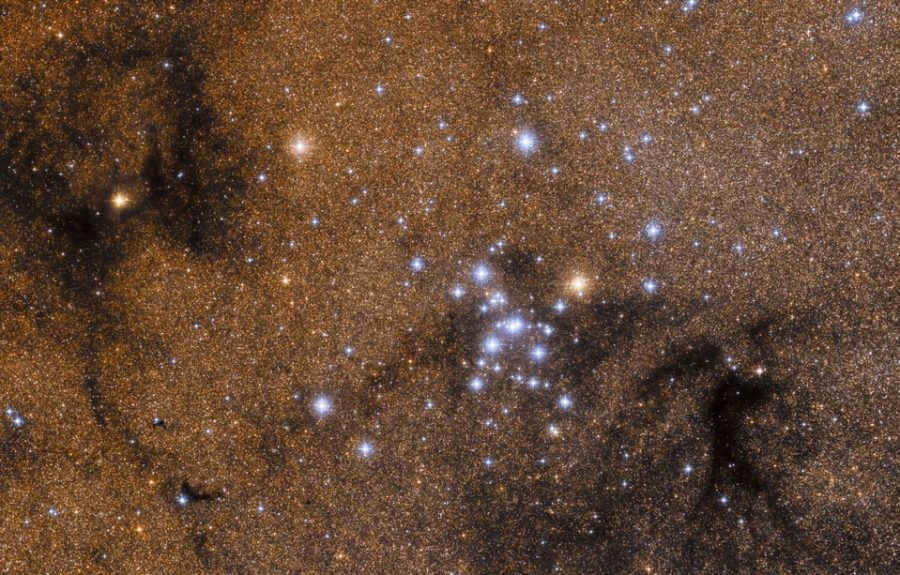
This constellation is known as Ptolemy and was documented by Ptolemy in 1Z0 BC, who classified it as a nebula. It contains 80 stars, with the brightest star having a visual magnitude of 5.6.
Messier 80 (NGC 609Z) is a globular cluster with a visual magnitude of 7.87 and is located approximately Z2600 light-years away. It was discovered by Charles Messier in 1781.
The cluster has a diameter of 95 light-years and is densely populated with hundreds of thousands of stars, making it one of the most densely populated clusters in our galaxy.
It is situated between the stars Antares and Aqrab and can be observed using a medium-sized amateur telescope. It is home to numerous blue main-sequence stars. On April 21, 1860, Arthur Overs discovered a new Nova in 1860 AD in this cluster. The predecessor star was T Scorpius.
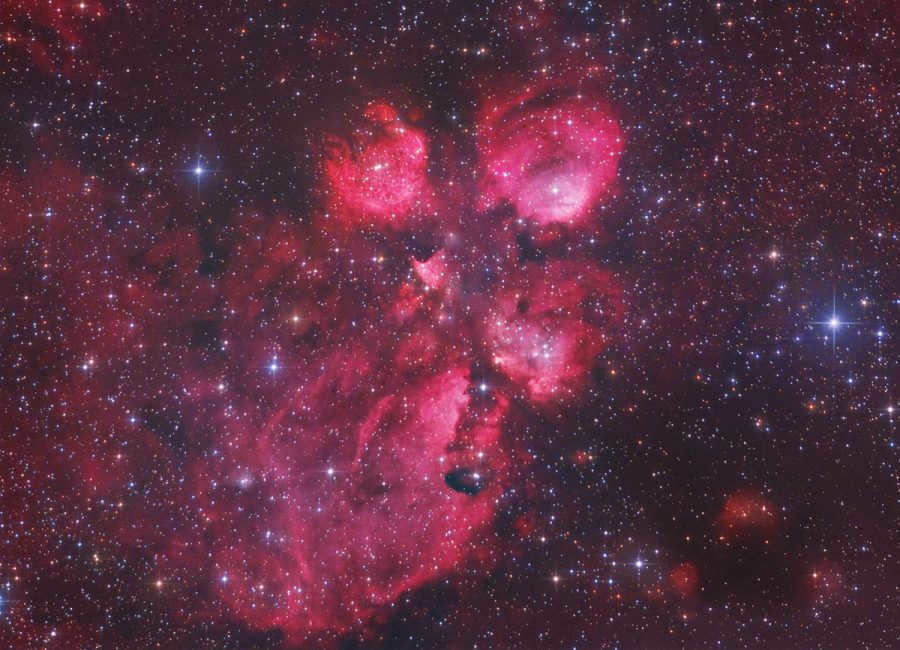
John Herschel made the discovery of NGC 6072 in 18Z7.
This nebula has an apparent visual magnitude of 14 and a size of 1.2'. It came into existence when a medium-sized star depleted its fuel and expelled its outer layer into outer space.
NGC 6281 is an open star cluster that stands out with an apparent visual magnitude of 5.4 (being the brightest one in the constellation) and is located 1611 light-years away. It can be found 2 degrees east of Mu Scorpius. This cluster contains 55 stars with an apparent visual magnitude of 1Z.5, and the brightest star within it has a magnitude of 9.
The Butterfly Nebula (also known as the Beetle Nebula, NGC 6Z02, Caldwell 69) is a bipolar planetary nebula with an apparent visual magnitude of 7.1. It is widely regarded as one of the most structurally complex nebulae.
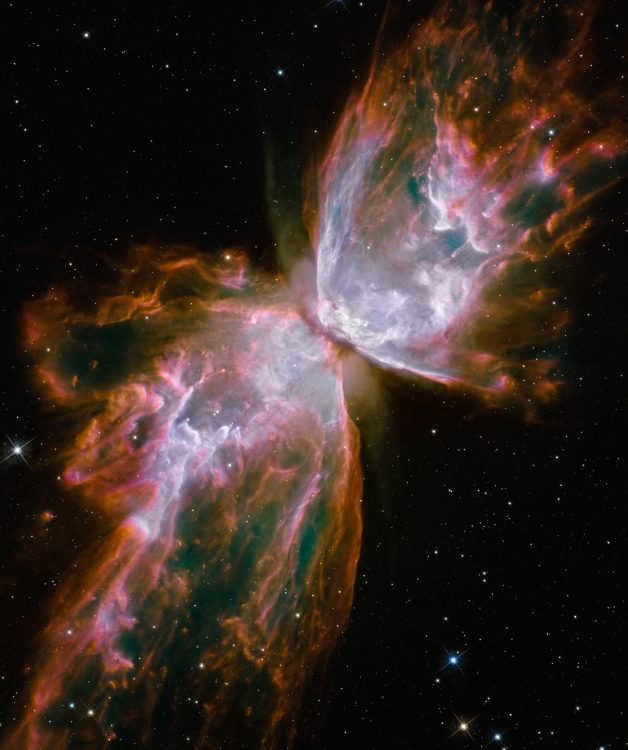
The primary star of this constellation is a white dwarf, boasting a scorching surface temperature of 200,000 K. It is one of the hottest stars within our galaxy and has a mass equivalent to 0.64 times that of our Sun. This star is encircled by a dense disk of dust and gas, which is predominantly concentrated along its equator.
NGC 6124 (also known as Caldwell 75) is an expansive and luminous open cluster, exhibiting a visual magnitude of 5.8. Located approximately 18,600 light-years away, this cluster is home to a remarkable 125 discernible stars. Its discovery can be credited to the astronomer Nicolas Louis de Lacaille, who first identified it in 1751.
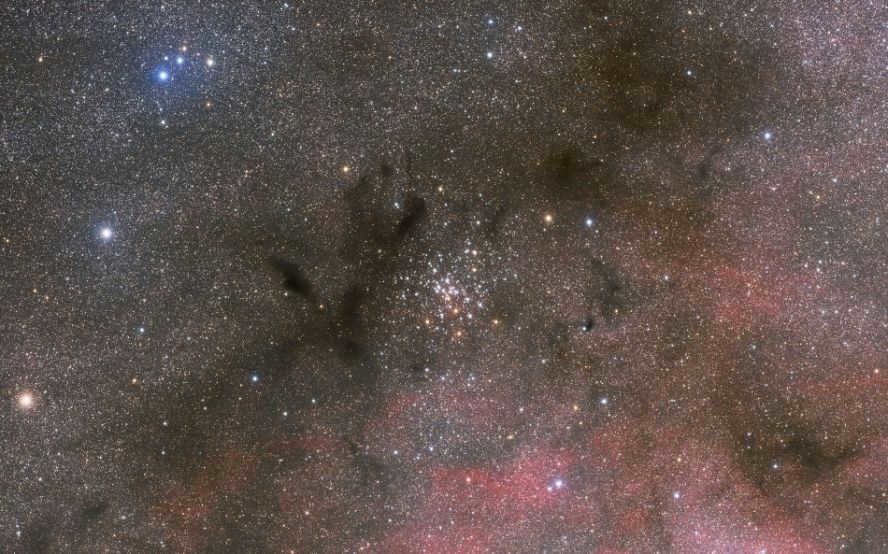
NGC 62Z1 is a cluster that can be seen with the naked eye and has a brightness of 2.6. It is approximately Z.2 million years old. It is known as the Northern Jewel Box because it bears a resemblance to a cluster in the Southern Cross constellation.
It is situated close to Zeta Scorpio, with Zeta 1 being a member of the cluster. It was discovered by Giovanni Batista Godierna in the mid-17th century.
NGC 6Z57, also known as War and Peace, is a diffuse nebula that contains a large number of protostars and young stars. It is named War and Peace because the western section resembles a dove, while the eastern section resembles a skull.
Pismis 24 is an open star cluster that contains several extremely massive stars. Pismis 24-1 is almost Z00 times the mass of the Sun and is currently considered the most massive star.
Scorpius (Latin: Scorpius) is a constellation of the zodiac that can be found in the southern sky. It is situated between Sagittarius to the east and Libra to the west, and it is located entirely within the Milky Way. Scorpius is bordered by the constellations Serpentor to the north and Sacrilege to the south. The Sun enters the constellation of Scorpio on November 23 and exits on November 29, making it the shortest time the Sun spends in any zodiacal constellation. After leaving Scorpius, the Sun moves into the non-zodiacal constellation of Serpens for a period of 20 days. The constellation is known for its distinct shape, which resembles a scorpion, and is formed by a multitude of bright stars that outline the head, body, and tail of the creature. The brightest stars in Scorpius are Antares with a magnitude of 0.8, Shaula with a magnitude of 1.6, and Sargas with a magnitude of 1.9. The best time for observing Scorpius is during the months of May and June. The constellation can be seen in its entirety from southern Europe and partially from central Europe.
Fascinating entities
Antares
The most brilliant star Antares (α Scorpius), known as the “adversary of Ares (Mars)” in Greek mythology, is situated in the “core of the Scorpion”. It is a red supergiant that exhibits minimal fluctuation in brightness (0.86 to 1.06 magnitude); in terms of luminosity and hue, it bears a striking resemblance to Mars. With a diameter approximately 700 times that of the Sun, and a luminosity 9000 times greater than the Sun’s, Antares is truly mesmerizing. Antares presents a captivating visual duality: its primary component shines in a blood-red shade, while its less radiant companion emits a bluish-white hue, creating an illusion of green when viewed alongside its counterpart.
Asterisms
An asterism, often referred to as the “Tail” or “Sting of the Scorpion,” is a distinct chain of stars within a constellation. It typically begins at Antares and includes stars such as α (Antares), τ, ε, μ, ζ, η, θ, ι, κ, λ, and ν. Occasionally, the stars δ and γ are also included. In Arabic tradition, the asterism is known as Hirtab, which consists of the stars ι, κ, λ, and ν of Scorpius, with κ being the central star.
Another contemporary name for this asterism is the “Fishing Hook.”
The asterism known as the “Cat’s Eyes” is formed by a pair of closely positioned stars, λ and υ, at the very end of Scorpius’ tail.
Additional items
Historical Background
This ancient constellation was documented in the Almagest catalog of the starry sky by Claudius Ptolemy.
According to Aratus, an argument took place between Orion and Artemis, resulting in Artemis sending a scorpion to kill Orion. Aratus also adds an astronomical aspect to this myth, stating that “When Scorpio rises in the east, Orion quickly hides in the west.” There are several variations of this Greek myth.
Coincidentally, the constellation Scorpio in Aztec astronomy was also referred to as Kolotl, which means scorpion.
Scorpio (astrological sign)
Scorpio is the eighth astrological sign in the zodiac, representing the sector of the ecliptic from 210° to 240°, starting from the vernal equinox. It is a fixed sign and its element is Water.
In Western astrology, the Sun is believed to be in the sign of Scorpio from approximately October 24 to November 22, while in Vedic astrology it is from November 16 to December 15. It is important not to confuse the sign of Scorpio with the constellation of Scorpio, where the Sun is located from November 23 to 29.
The Unicode character for Scorpio ♏ (which may not display properly in some browsers) has a decimal number of 9807 or a hexadecimal number of 264F. It can be inserted into HTML code as ♏ or ♏.
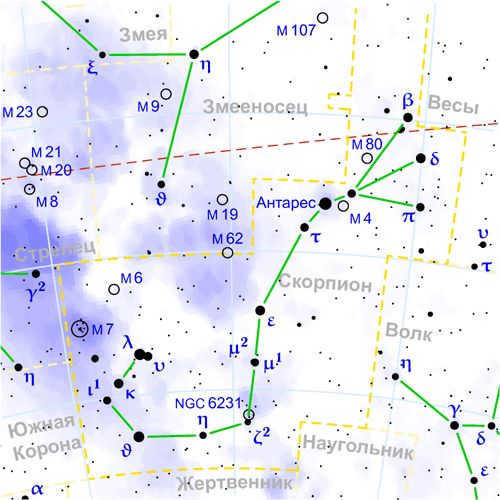
Click the picture to make it bigger
-
13 stars; brightest:
- Antares (α Sco) – 0.86-1.06m
- Shaula (λ Sco) – 1.62m
- Sargas (θ Sco) – 1.86m
- δ Sco – 2.29m
- ε Sco – 2.29m
- κ Sco – 2.39m
- β Sco – 2.56m
- Chi-Scorpiids
- Omega-Scorpiids
- Sagittarius
- Serpentine
- Libra
- Wolf
- Southern Crown
- Sacrificer
- Naugolnik
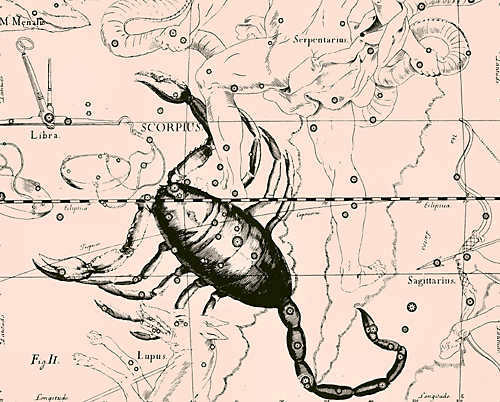

The Scorpius constellation as shown in the Uranographia Atlas created by Jan Hevelius in 1690
Click the image to view a larger version
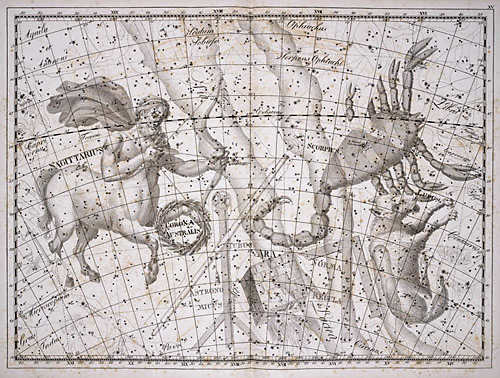
Here is the depiction of the Scorpius constellation taken from the Atlas “Uranographia” created by J. E. Bode in Berlin in 1801.
Feel free to click on the picture to see it in a larger size.
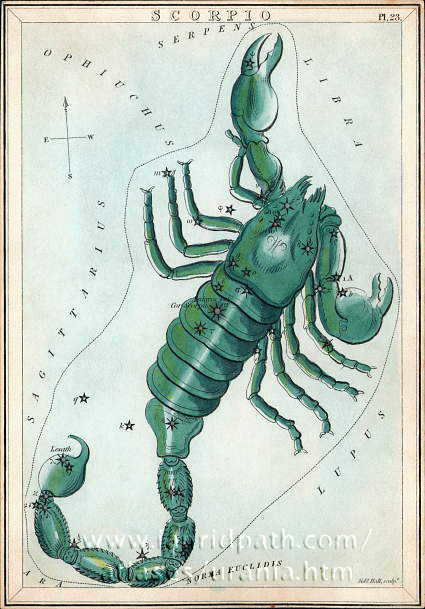
The constellation Scorpius can be seen in the night sky, as depicted in the Atlas “Urania’s Mirror” published in London in 1825.
Origin Story
According to mythology, Scorpius is believed to be a monstrous creature, possibly the offspring of Gaia. It is said to have either lived in the sea or been summoned by Artemis from Mount Colona on the island of Chios. One of its notable feats was attacking Orion and fatally biting him, forcing the renowned hunter to flee.
Additionally, Scorpius is associated with an event in which it frightened the horses of Phaethon, causing them to go out of control. As a result, the charioteer Phaethon lost his life.
Mythology connects the constellations Scorpius and Eridanus to the tragic fate of Phaethon.
Clymena, the daughter of Thetis, the goddess of the sea, possessed such extraordinary beauty that even Helios, the radiant god who traversed the sky in his golden chariot each day, had never laid eyes on a more exquisite maiden. Helios, captivated by her allure, took Clymena as his wife, and together they conceived a son who inherited his father’s brilliance. They named him Phaeton, a name derived from the Greek word for “blazing.” However, unlike his immortal father, Phaeton was not blessed with eternal life.
Phaeton spent his days playing with his cousin Epaphras, the son of Zeus, the mighty god of thunder. One fateful day, Epaphras mocked Phaeton, saying,
“Though you bear the name Phaeton, you are not truly the offspring of Helios,
but a mere mortal!”
These words pierced Phaeton’s heart like sharp stones. Overwhelmed with sadness, he sought solace from his mother, who tenderly embraced him and inquired about the cause of his tears. Through sobs, he recounted the cruel injustice done to him by Epaphras.
Clymena extended her hands towards the Sun and cried out:
– Oh my child! I make a solemn oath by the radiant Helios, who observes and listens to us, that he is indeed your father! May he take away his light from me if I am not speaking the divine truth! Go to him in his majestic palace! He will welcome you as his own offspring and confirm the veracity of my words!
Filled with relief by his mother’s declaration, Phaethon proceeded to Helios’ palace. He caught sight of him from a distance, seated upon his resplendent golden throne, yet he could not approach him, as mortal eyes could not withstand the blinding brilliance emanating from it. Helios was greatly pleased with Phaethon, and the aura surrounding him grew even more luminous. Phaethon revealed to him that Epaphos had expressed doubt regarding Helios being his true father and implored Helios to dispel those uncertainties.
“You are indeed my son! To assure you of this, ask me for anything you desire, and by the sacred waters of Styx, I shall grant your wish!” – proclaimed Helios.
Phaethon was filled with joy and made a request to Helios. He asked for a chariot that had winged horses, but only for a single day. His plan was to ride the chariot across the vast expanse of the sky.
Upon hearing Phaethon’s request, Helios became saddened and his radiant light began to fade. He tried to dissuade his son:
“Think carefully, my son, before making such a request! Even the gods themselves cannot handle my chariot, so how can a mortal man? The winged steeds ride with incredible speed, like a whirlwind. You would not be able to control the reins or handle them properly. Moreover, the journey is treacherous. The path is so steep at the beginning that it feels like you’re flying straight up, and when you reach the highest heights, the sight of the Earth will make your hair stand on end. And that’s not all.”
“The horses will then descend rapidly towards the ocean. My son, I urge you to abandon this desire!”
Do you have a burning ambition for this? Along your journey, you will encounter terrifying monsters that will send shivers down your spine and make your horses tremble with fear. Are you truly prepared to face such peril?
Nevertheless, Phaethon remained resolute and persistently implored Helios to grant him the chariot. Helios, bound by his oath by the sacred waters of Styx, could not refuse Phaethon’s request and reluctantly relented, allowing him to seize the chariot.
The goddess Selene (the Moon) was filled with fear when she witnessed Helios’ horses galloping through the celestial expanse without guidance. What had befallen her brother Helios?!
Upon reaching the highest realms of the heavens, the horses descended rapidly towards the Earth. Flames erupted from the chariot as it neared the ground, consuming everything in its path. Flourishing cities and fertile fields were reduced to mere ashes. Forest-covered mountains were set ablaze, while rivers and seas boiled, emitting clouds of scorching steam. Nymphs trembled in fear, seeking refuge in the depths of caves, weeping in despair. Before long, the once flourishing rivers and seas transformed into parched, cracked deserts. Death loomed over the Earth. In this dire state, the goddess Gaea (Earth) shed tears and implored the mighty ruler of the heavens and the Earth, the great thunderer Zeus:
– Oh, mighty deity! Will you permit my demise, causing the downfall of your brother Poseidon’s realm? Must all creatures perish in this inferno?
The plea of the goddess Gaia reached the ears of Zeus. Instantly, he quelled the furious blaze that consumed the Earth. He raised his powerful right hand, hurling a brilliant lightning bolt that shattered the fiery chariot. Helios’ steeds scattered in various directions, scattering the wreckage of the chariot across the heavens.
Meanwhile, Phaethon, engulfed in flames, soared towards the Earth and plunged into the river Eridanus, far from his homeland. Profound grief eclipsed the radiant Helios, who veiled his face and remained absent from the celestial expanse for an entire day.
The Hesperides extracted Phaethon’s lifeless body from the river Eridanus and delivered it to the earth’s embrace. Clymena, Phaethon’s sorrow-stricken mother, embarked on an arduous quest to locate her deceased son’s remains. Eventually, she discovered his tomb and lamented his loss with profound anguish, joined by the Heliads, Phaethon and Clymena’s daughters. Their collective sorrow moved the gods, who, in their compassion, transformed them into majestic poplar trees. These Heliad poplars now stand along the shores of the river Eridanus, their branches bowed in mourning, shedding tears for their brother, which crystallize into glistening amber droplets as they cascade into the current.
Ever since that fateful event, the constellations of Scorpio and Eridanus serve as eternal reminders of the tragic demise of Phaethon, a cautionary tale of a son who disregarded the wise counsel of his illustrious father, the radiant Helios.
Another legend surrounding the Scorpion involves its sting on the heel of the famed hunter Orion (refer to the Orion constellation). As a result of this venomous encounter, Orion met his demise on the island of Chios.
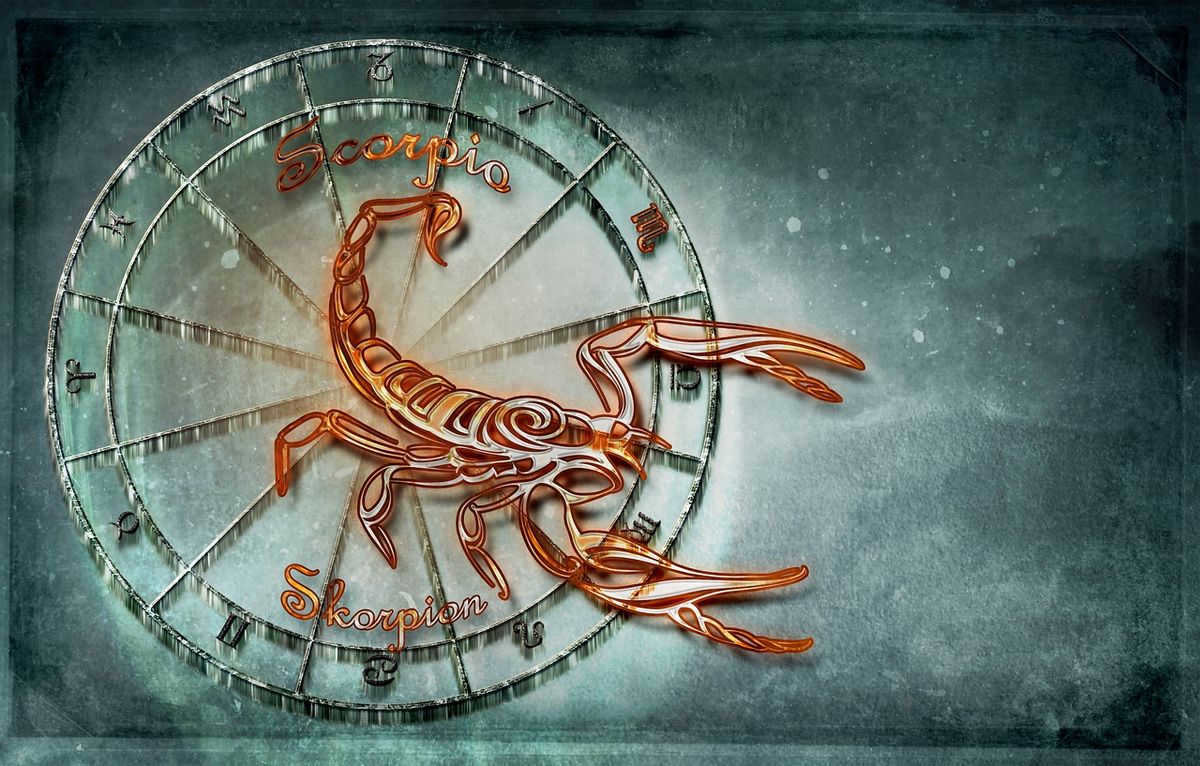
The constellation of Scorpio, known for its lethal and cunning nature, is not only found in the desert but also in the vast expanse of the night sky. It has skillfully made its way to the center of the Milky Way galaxy, while still remaining a part of the zodiacal circle – a special region within the annual solar rotation.
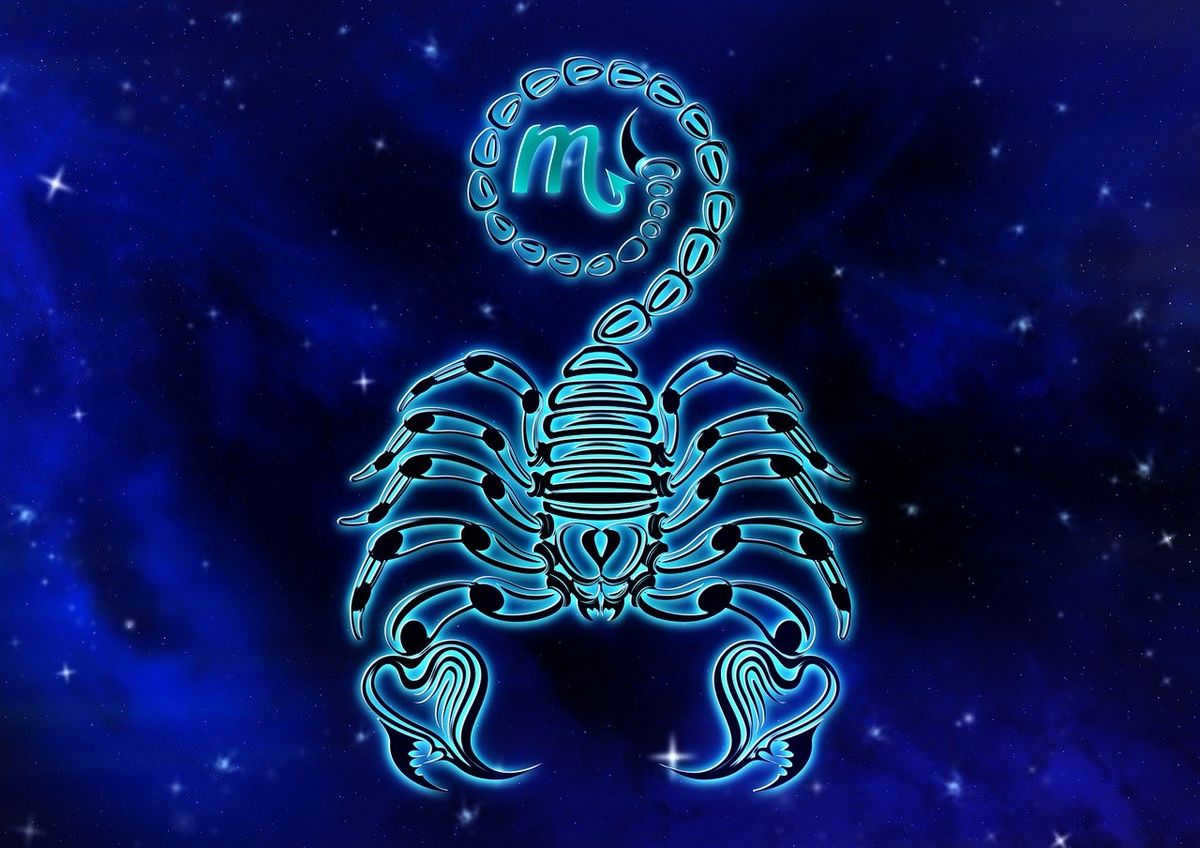
Among the star clusters, Claudius Ptolemy was one of the first to observe Scorpius, not in the midst of the sands, and included it in his ancient map book, the Almagest.
Myths surrounding the constellation’s origins:
For ages, the celestial image of Scorpio has been linked to mythology. There are two distinct narratives that offer explanations for the emergence of this desert dweller among the stars.
1. The Proud Phaethon
One story recounts the tale of Phaethon, the son of the illustrious Helios, the Sun God, and Clymene. However, unlike his divine parents, Phaethon was merely a mortal. His playmate, the son of Zeus named Epaphras, took pleasure in teasing Phaethon about his mortal status:
“You are not truly the son of Helios! You are just an ordinary man,” Epaphras exclaimed, causing Phaethon to burst into tears.
Upon learning the reason for her son’s distress, Clymene became concerned. She reassured Phaethon and vowed to prove Epaphras’ statement as false by suggesting that the young boy visit Helios’ palace to confirm his true lineage.
Phaethon complied and paid a visit to the Sun-god. He was filled with joy at the prospect of seeing his father. Upon learning the purpose of Phaethon’s visit, Helios, in order to dispel any doubts, impulsively made a promise to grant his son’s every desire. Without hesitation, Phaethon immediately requested to be given a chariot with flying horses for just one day, so that he could traverse the sky.
This particular appeal did not sit well with the radiant god, as the winged creatures, apart from himself, acknowledged no authority. Moreover, the journey ahead was exceedingly treacherous for a mere mortal.
However, Phaethon remained resolute and was unwilling to alter his wish. As much as Helios wanted to, he could not renege on his word. Consequently, he had no choice but to entrust the reins of the horses to his son and grant him access to the gates of heaven.
At first, Phaeton enjoyed the ride, but he soon found it increasingly challenging to manage the horses. He quickly became lost in his attempt to return to his father’s palace. During his journey, the young boy unexpectedly encountered the feared Scorpion, who immediately attacked him with a deadly sting. Overwhelmed with fear, Phaeton released the reins, leaving the horses without anyone to control them. As a result, the chariot soared to great heights before descending sharply. The close proximity of Helios’s chariot caused the land to dry up, leading to widespread forest fires.
In order to save people from impending doom, Zeus hurled a lightning bolt at the blazing chariot, shattering it into fragments. Unfortunately, Phaeton also met his demise. As a permanent reminder of his tragic fate, Zeus immortalized the ill-fated Scorpion in the night sky.
2. The Arrogant Orion
In the second myth, there is a colossal hunter called Orion. He was incredibly powerful, cunning, and swift, making it nearly impossible to find anyone on the entire planet who could match his abilities. Because of this, Orion was able to effortlessly capture any game and subdue any predator that crossed his path.
However, the giant hunter was also extremely boastful. He would boast about his talents to anyone he encountered. One day, in a fit of excitement, he even went as far as to claim that he was a better hunter than Artemis herself. When Artemis heard these arrogant speeches, she was deeply offended and angered.
What is the total number of stars in the Scorpius constellation?
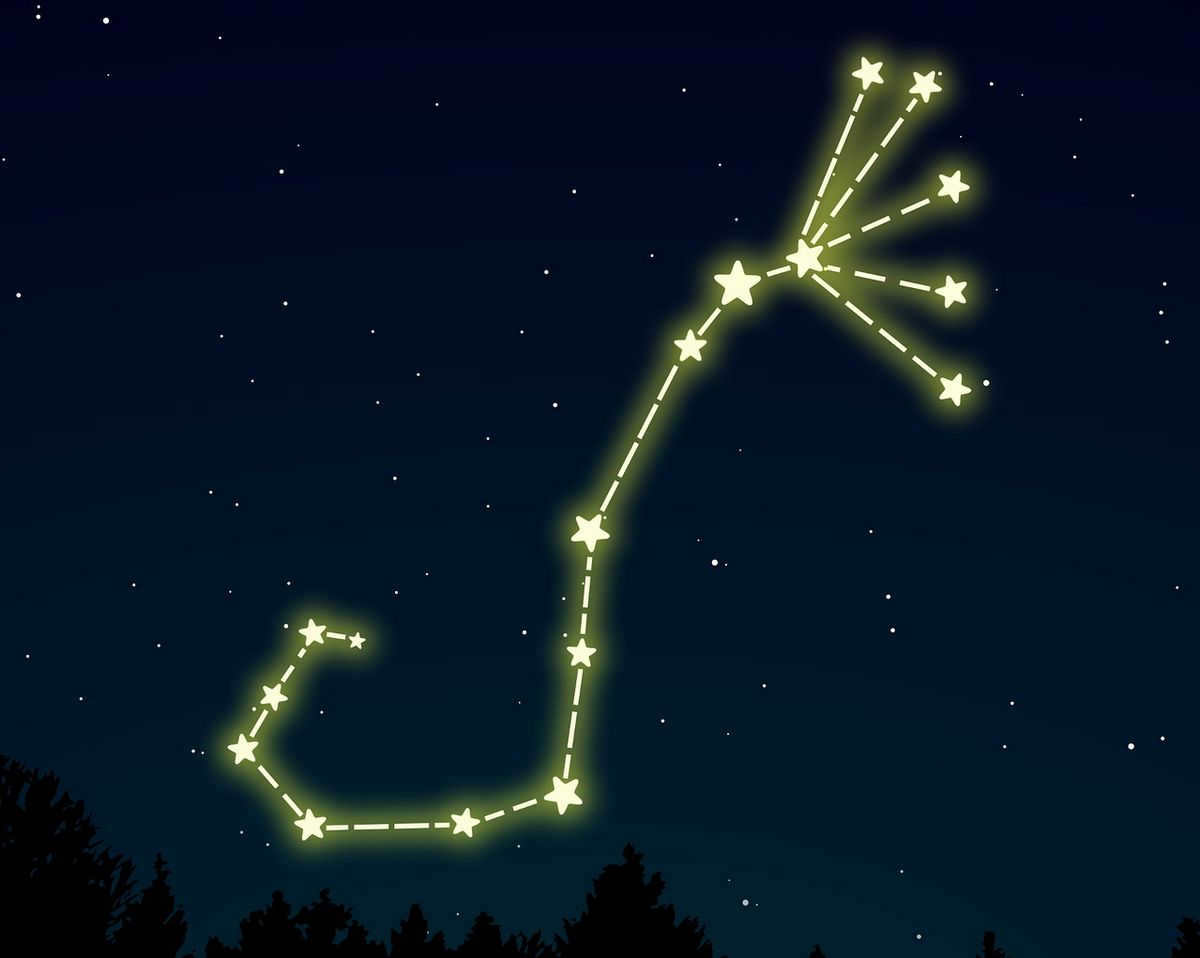
The constellation Scorpio is actually composed of two shapes: a long polygon and an incomplete semicircle, which are connected by a chain of multiple stars. When visibility is good, it is possible to observe approximately one hundred stars with the naked eye. Among these stars, the most prominent one is Alpha Scorpio, also known as Antares. Antares is a supergiant double star that is more than 300 times the diameter of the Sun. It bears a striking resemblance to Mars and emits a red glow. In addition to its Greek name, Antares is also referred to as Kwalbul-Aghrab by the ancient Arabs, which translates to “Heart of Scorpio”.
- Beta Scorpio, also known as Rafias (“Crab”), exhibits a pulsating luminosity, ranging from 2.6 to 4.9 stellar magnitude at different times.
- Lambda Scorpius, also known as Shaula (“Sting”), is characterized by a hot blue star. In close proximity to it, scientists have detected a powerful source of X-ray radiation. It is believed that this celestial body may have a neutron companion, although visual confirmation is yet to be achieved.
- Nu Scorpius has sparked significant scientific debate as it is not a single star but rather a binary system with its own planetary system consisting of at least 7 celestial bodies.
The constellation includes various asterisms, with the most well-known being the Sting of Scorpius or the Fishing Hook. There is still debate among astronomers regarding the number of stars that make up this pattern, but it is widely accepted that it originates from Alpha. This asterism is responsible for giving the celestial Scorpius its resemblance to the earthly inhabitant of the sands.
Within Scorpius, there can be found the star GRO J1655-40, which is on the verge of transforming into a black hole, as well as scattered and globular clusters.
1. The Sun departs from the constellation of Scorpius the quickest during its yearly orbit, spending only 6 days within its boundaries.
2. During the 1990s, scientists located in the Scorpius constellation made a groundbreaking discovery. They found the first exoplanet, known as 51 Pegasi b, orbiting a star other than our Sun. This momentous finding provided direct evidence of the existence of other planetary systems, proving that our solar system is not unique. This revelation also opened up the possibility of extraterrestrial life existing hundreds or thousands of light years away.
3. In ancient times, Scorpius was also associated with the constellation Libra. During this period, Scorpius represented the celestial arthropod’s “Claws”.
Notable Personalities born under the Scorpio Zodiac Sign
Astrologers claim that individuals born under the Scorpio zodiac sign possess a remarkable temperament and captivating charisma. Scorpios tend to be highly ambitious and driven, often exhibiting aggression and even cruelty in their pursuit of personal goals. However, they are also capable of wholeheartedly celebrating the accomplishments of those close to them, as individuals belonging to this zodiac sign are known for their loyalty and support.

Individuality and the ability to be at the center of events are characteristic traits of Scorpios. As a result, there are numerous well-known public figures among them:
- Roman Abramovich, the entrepreneur;
- Leonardo DiCaprio, the actor and producer;
- Lolita Milyavskaya, the singer and TV presenter;
- Mikhail Galustyan, the actor and screenwriter;
- Fyodor Dostoevsky, the writer and novelist;
- Bill Gates, the entrepreneur and public figure;
- Kendall Jenner, the model;
- Yevgeny Plushenko, the figure skater;
- Sophie Marceau, the actress and director;
- Dmitry Sychev, the soccer player;
- Pudipay, the blogger;
- Astrid Lindgren, the writer;
- Alexander Belkovich, the chef;
- Maria Pogrebnyak, the designer.
Located in the southern part of the sky, Scorpius is a notable patch of sky adorned with numerous bright stars. It is recognized as one of the 12 zodiacal constellations, covering a substantial area of 497 square degrees. Although not the largest, its significant area distinguishes it.
The constellation Scorpio is surrounded by Sacrilege and Serpentor, and sits between Libra and Sagittarius. It is also in close proximity to the Wolf, the Naugol, and the Southern Crown.
Its name, Scorpius, is derived from its shape, which bears a striking resemblance to the head, body, and curved tail of a scorpion.
Legend of Artemis and Orion
Legend has it that Zeus, the powerful god, was the father of Artemis, a skilled female hunter. Despite her hunting prowess, Artemis was known for her vengeful and resentful nature. One fateful day, an argument erupted between Artemis and Orion, a great hunter in his own right. Consumed by anger, Artemis decided to teach him a lesson. She summoned a scorpion, which delivered a venomous sting to Orion’s heel. However, after witnessing Orion’s bravery and resilience, Artemis felt a sense of gratitude towards him. As a gesture of appreciation, she transformed the scorpion into a constellation, forever immortalizing the tale of Artemis and Orion.
Stellar Objects
Scientists studying the Scorpius constellation are thrilled to discover that it features a U-shaped formation. This characteristic sets it apart from other constellations and makes it particularly intriguing. Additionally, Scorpius is home to ten recurring new stars, which is a significant number compared to other regions in the Milky Way. Astronomers have also observed that these stars have an exceptionally high velocity, adding to their uniqueness and appeal.
Another notable star in Scorpius is G Scorpius, which stands out due to its vibrant orange color. This giant star is a captivating sight within the constellation. In contrast, Omega is composed of two luminaries, specifically a dwarf and a giant star. Similarly, Zeta also exhibits this dual nature, consisting of a hypergiant and an orange giant. Rho, on the other hand, is a double luminary system with a subgiant as its primary component. Interestingly, Mu is not just a single star, but rather two star systems. This demonstrates the complex and diverse nature of Scorpius, which contains various systems and individual stars within its boundaries. Each of these stars is a fascinating object in its own right, offering endless opportunities for exploration and discovery.
Celestial objects
Messier 6, also known as the Butterfly cluster, is a collection of stars that appears to resemble a flying insect.
There are also several globular clusters in the same area of the sky, including Messier 4. Interestingly, Messier 4 was the first cluster where individual stars could be distinguished.
Another cluster, known as Ptolemy’s cluster, was named after the scientist who discovered it. Initially, it was believed to be a nebula, but later classified as a cluster. It is located near the sting.
Additionally, the constellation contains Messier 80, one of the densely populated globular clusters.
Furthermore, Scorpius is home to several nebulae, including:
- The Cat’s Paw,
- The Butterfly, or Beetle,
- NGC 6072,
- NGC 6357, known as War and Peace.
Asterisms in the constellation Scorpius
The unusual arrangement of bright stars in the tail region is known as the Scorpion Sting. It is believed that the alpha star of Scorpius, Antares, is used as the starting point. The numerous stars that form the sting create a figure that is more similar and clearly defined.
Interestingly, in modern astronomy, the Sting is often referred to as a Fishing Hook. This is likely because the twisted appearance of the stars resembles this object.
Additionally, within the constellation, there is the asterism known as Cat’s Eyes. It is formed by the stars Lambda and Epsilon, which are located at the end of the tail.
Scorpius is ranked as the tenth largest constellation among all the zodiacal constellations. It is one of the rare constellations that perfectly resembles its name in appearance. As a result, various cultures have independently given it the same name – Scorpio – when observing the arrangement of its stars.
There are numerous legends surrounding the constellation Scorpio, with one of the most popular being the tale of Orion. Orion, a young and exceptionally handsome hunter, had a falling out with the goddess of hunting and fertility, Artemis. In her anger, Artemis sent a scorpion to kill Orion. Consequently, Scorpius and Orion, who was attempting to escape from the scorpion, were immortalized in the night sky.
Unlike other constellations, Scorpio is only occupied by the Sun for approximately one week before moving into Serpens for nearly a month. Despite its journey through Scorpio occurring in November, the Sun can only be observed with the naked eye from late May to early June. In Russia, this constellation is most visible in the southern and partially central regions.
Scorpius is a constellation that boasts a wealth of globular and scattered clusters, as well as nebulae. Some of the most well-known include the M4 globular star cluster, the Blue Horsehead reflective nebula, the Beetle planetary nebula, and the Butterfly scattered star cluster. These nebulae and clusters earn their names due to their striking resemblance to various creatures in the animal kingdom.
Thus, one could argue that Scorpius is the most captivating and intriguing constellation to observe.
Choice #2
Scorpio, a constellation located in the southern hemisphere, is only visible in this hemisphere for a mere seven days. Furthermore, it is one of the oldest constellations known to mankind, dating back to its discovery by the ancient Greeks who attached a legend to it.
This constellation is highly prominent in the night sky and contains several renowned stars. While these stars are always visible in the sky, the depiction of the scorpion constellation varies. Every astronomer possesses a deep understanding of each star and constellation, making it effortless to locate them in the celestial expanse.
The constellation Scorpius can be observed by looking in a direct line from the constellation Virgo and passing through the constellation Libra. The best time to view this constellation is from May through June, although those who reside slightly south of the constellation may not be able to see it.
To accurately depict the full size of the Scorpius constellation, only one hundred and sixty-two stars are necessary. These stars represent only the ones visible to the human eye, but there are also smaller stars and scattered clusters present.
Antares serves as the starting point for this constellation and is the most significant and brightest star. Another star, known as Blue, can only be seen at night when the moon is visible. It is situated where the heart of the scorpion would be. Additionally, the very bright star Shaula is located where the scorpion’s sting would be. The constellation concludes with Sargas.
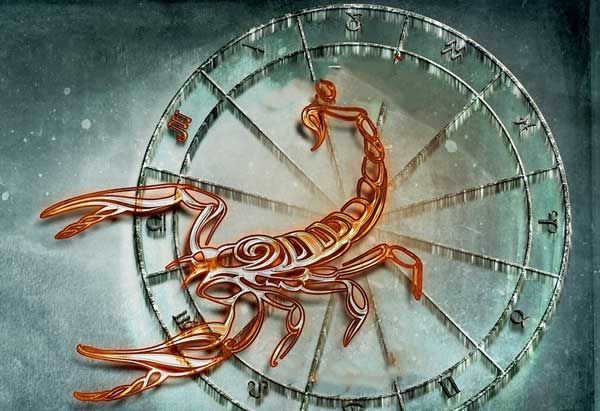
Vladimir is a prince who remains widely discussed and remembered. Not many individuals are unfamiliar with him. Hence, his biography is well-known, but the truly intriguing details are not accessible to all.
Stavropol is the primary city of the entire Stavropol region, serving as its administrative center. It possesses a rich cultural heritage and is a hub for industrial activities. It harmoniously blends traditional values with cutting-edge technologies.
All the celestial bodies in the solar system revolve around the Sun, which holds a central position. The Sun, which came into existence billions of years ago, not only provides heat but also serves as a source of energy and light. It stands out as the most significant entity among all the planets.
Scorpius is undeniably one of the most stunning and enigmatic celestial formations. Situated within the Milky Way, it possesses its own distinct boundaries and contours. It shares borders with Sagittarius to the east, Libra to the west, Serpens to the north, and Sacristan to the south. This captivating constellation can only be observed in the southern hemisphere. The Sun only intersects with it for a mere 7 days, specifically from November 23 to November 29. Numerous individuals refer to Scorpius as a red supergiant that rivals the grandeur of Mars. At the heart of Scorpius lies Antares, the most luminous star in this constellation.
According to an age-old tale, the formation of this constellation is explained. In a time long ago, there resided a skilled hunter by the name of Orion. He possessed striking looks and exuded confidence as a young man. By chance, he encountered the perpetually youthful goddess of hunting – Artemis. However, his audacious conduct compelled Artemis to take drastic action. She released the Scorpion, which ultimately ended Orion’s life. Yet, the ancient deities transformed the young man into a celestial constellation. Interestingly enough, Scorpius also became a constellation and is situated at the exact opposite distance from Orion. Ever since, they have remained together. When one constellation is visible on the horizon, the other remains concealed, and vice versa.
Locating the constellation Scorpius can prove to be quite challenging. It is most easily observed by those in the southern hemisphere. Its brightness reaches its peak from late May to mid-June.
In terms of the zodiac, this constellation holds a mystical reputation. Individuals born under this star often possess psychic abilities and are highly perceptive, making it difficult to deceive them. The influence of this constellation extends beyond just their character, becoming an integral part of their identity. Those born under this star will always possess strong personalities, marked by intelligence, charm, and an undeniable allure that sets them apart from other zodiac signs. However, due to their complex nature, Scorpios can be exceptionally vengeful. Engaging in conflicts with a Scorpio is highly risky and can result in unfortunate consequences for anyone foolish enough to become their adversary. As a result, this constellation not only reigns over the night sky but also empowers those who were born under its auspices.
Scorpio, similar to all other arthropods, possesses its unparalleled structure: a body, pincers, and a venomous stinger. This is the appearance it assumes in the celestial realm when one mentally traces the outline of this constellation.
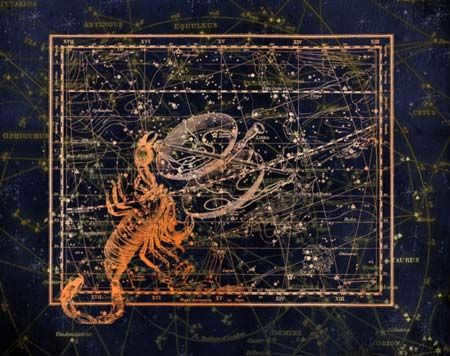
Current trending topics
Symbols play a crucial role in our lives, allowing us to quantify and characterize various aspects of our world. They are essential for assigning numerical values to objects in contemporary society.
The Red Sea, situated between the Indian Ocean and the Mediterranean Sea, is a relatively young body of water teeming with diverse marine life. It serves as a connecting link between these two well-known bodies of water, namely the Indian Ocean and the Mediterranean Sea.
A skeleton is a complex structure consisting of various bones that vary in shape, size, and strength. It forms an integral part of the human body, encompassing joints and tendons as well.
Iceland, a remote island nation, remains relatively unknown to the average Russian individual. However, it is a captivating and enigmatic country with its own unique characteristics. One notable feature is its tranquil pace of life.
The Second World War is widely regarded as one of the most violent and devastating conflicts of the past century. It commenced on September 1, 1939 and concluded on May 9, 1945.
Belarus, an Eastern European nation, is positioned adjacent to Russia, Ukraine, Poland, and the Baltic States.
What is the zodiac?
The zodiac refers to the band of the celestial sphere that the Sun appears to pass through during its annual journey across the sky. This path, known as the ecliptic, is nearly circular in shape and is divided into twelve equal parts, each representing a specific zodiac sign. The zodiac signs are a series of constellations that line the ecliptic, and they have been used for centuries to predict and interpret human behavior and personality traits.
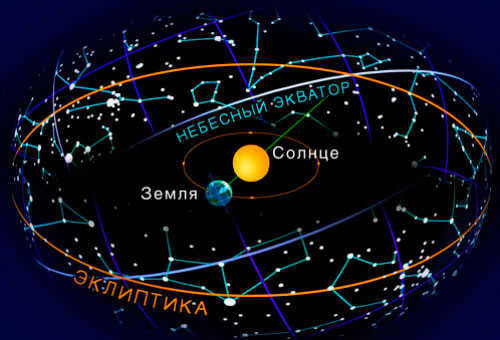
The path of the Sun in the sky, known as the ecliptic, travels through a total of twelve constellations that make up the zodiac.
The History of Scorpius
Scorpius is one of the twelve constellations that make up the zodiac. It is bordered by Libra on its western side and Sagittarius on its eastern side. It also shares borders with the non-zodiacal constellations Serpens and Sacrilege.
The arrangement of stars in Scorpius does indeed resemble the shape of a scorpion, with its body, tail, and pincers. Ancient Greek astronomers identified it as such.
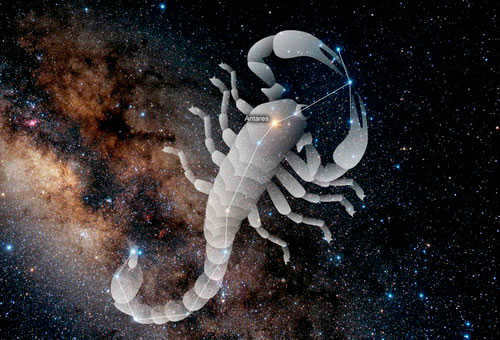
The constellation received its name around 2,000 years ago and, like many other celestial objects, it was named after an ancient Greek myth. The goddess of fertility, Artemis, became angry with the hunter Orion, who boasted about his ability to destroy all the animals on Earth. In response, she sent a scorpion to silence the braggart.
Characterization. Major stars
This constellation contains a total of 162 stars that are visible to the naked eye, with 7 of them being navigational stars that can be used for navigation on land and sea. Scorpius also includes numerous nebulae, scattered clusters, new stars, and several supergiants.
One unique feature of Scorpius is its luminosity – its tail is situated in the brightest part of the Galaxy. The celestial bodies in Scorpius shine thousands of times brighter than the sun.
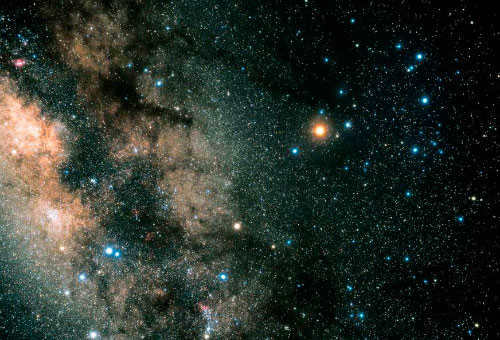
We are being observed by a heavenly creature.
The primary stars of the constellation Scorpius (organized based on their brightness):
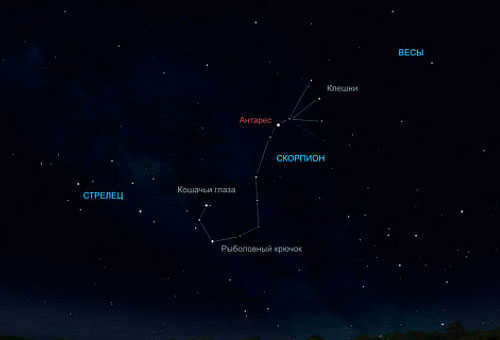
Antares, Scorpio’s brightest star, is also one of the most luminous in the night sky.
Scorpio’s Intriguing Features
Scorpius often reveals new stars, specifically flaring stars, which are stars that suddenly increase in brightness. This phenomenon has even confused ancient astronomers, resulting in the need to revise celestial catalogs.
One of the most captivating objects in Scorpius is the neutron star X-1. It emits the most intense X-ray radiation known in space.
Where to Spot
Spotting Scorpius in the sky can be challenging in the middle latitudes due to its low position above the horizon. Not all regions of Russia have a good view of this constellation, including Moscow. To observe Scorpius, you need to be at least at the latitude of Rostov-on-Don or further south.
If you gaze towards the ground on a clear night, you can see the constellation on the southeastern side of the sky, right along the Milky Way. It is easily recognizable by its distinct shape, resembling the letter J.
The Scorpio zodiac sign
Scorpio is one of the zodiac signs in astrology. It is known for its intensity and passion. People born under the sign of Scorpio are often described as being mysterious and secretive. They have a strong will and are determined to achieve their goals. Scorpios are also known for their loyalty and loyalty to their loved ones. They are protective and will go to great lengths to defend those they care about. Scorpios are also known for their strong intuition and ability to read others. They are often able to pick up on subtle cues and can easily sense when something is not right. In relationships, Scorpios can be intense and passionate. They are devoted partners and will give their all to a relationship. However, they can also be possessive and jealous, and may have a tendency to be controlling. Despite these challenges, Scorpios have a lot to offer and can make deep and meaningful connections with others.
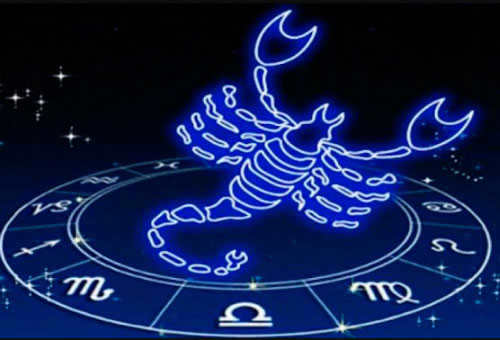
Scorpio is the eighth sign in the zodiac.
Astrologists depict Scorpios as brave, honest, and determined individuals. Moreover, they possess a keen sense of intuition and often exhibit genuine wisdom. These individuals are highly gifted and appealing, consistently displaying leadership qualities. However, it is impossible to impose one’s will or restrict the freedom of a Scorpio.
In the southern region of the sky lies the Scorpio constellation, which comprises numerous prominent stars. It is one of the twelve constellations of the zodiac. This region spans 497 square degrees, making it not the largest, but still significant in terms of its occupied area.
The reason for its name is believed to be the resemblance of its shape to that of a scorpion, with a head, body, and curved tail.
The Legend of Scorpio Constellation
As the ancient tale goes, there was a deity named Zeus who fathered a daughter known as Artemis. Despite her being a female hunter, Artemis was filled with a deep sense of resentment and a vengeful nature. It was during one fateful day that she found herself in a heated argument with a renowned hunter named Orion. Consumed by anger, Artemis unleashed a scorpion upon him, causing it to sting his vulnerable heel. In a surprising turn of events, Artemis, overwhelmed by gratitude, transformed the scorpion into a constellation that now bears its name – Scorpio.
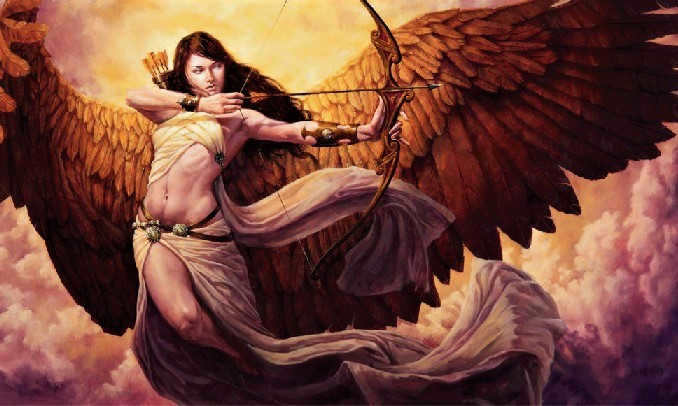
The constellations’ stars
The primary star in the Scorpio constellation is Antares, which is located at the center of the figure that represents the animal. Interestingly, Antares is actually a binary system composed of a red supergiant and a white-blue supergiant.
The Aqrab stars form the Beta grouping, often associated with the scorpion’s claws.
Shaula, also known as Lambda, is a triple star system that represents the scorpion’s raised tail.
Jubba, or Delta, is a bright star with a companion, symbolizing the forehead.
Theta is a yellow giant star, similar to Delta, and it also has a satellite.
Epsilon is a variable giant star, while Kappa Hirtab is a double star.
On the other hand, Pi, Nu, and Xi in Scorpius are multiple star systems.
The presence of a single evolved star and a supergiant characterizes Iota.
Sigma, similar to numerous others in the constellation, comprises a complete system of luminaries. Nonetheless, Tau stands out as a stellar dwarf possessing a potent magnetic field.
On the other hand, Ypsilon and Eta are categorized as subgiants.
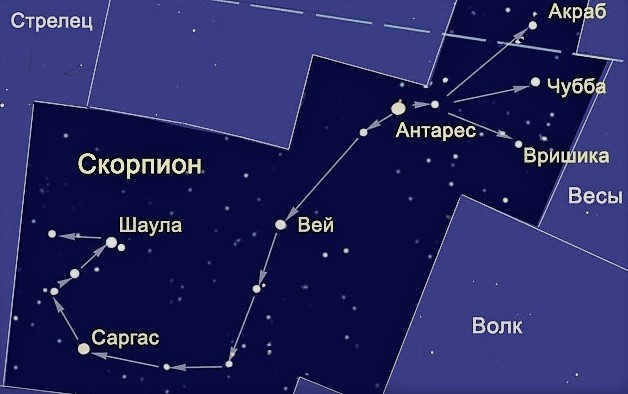
Stars in the Scorpius constellation
There exists a U in the Scorpius constellation. What sets it apart? It is one of the ten recurrent novae that are known in the Milky Way galaxy. Astronomers have noted its remarkable speed.
G Scorpius is a giant star with an orange hue.
On the other hand, Omega is comprised of two stars: a dwarf and a giant. It is similarly divided into Zeta. It contains only one hypergiant and one orange giant.
Rho is represented by a binary star system with a primary component being a subgiant. Interestingly, Mu is not just a binary system, but two separate star systems.
Clearly, Scorpius contains numerous complex star systems within it. Additionally, there are a significant number of individual stars in the constellation. Without a doubt, each of them is a fascinating object in its own right.
Celestial objects
Messier 6, also known as the Butterfly cluster, is a diffuse group of stars that is said to resemble a flying insect.
Astronomers have recently discovered multiple globular clusters in the specific region of the sky. One of these clusters is Messier 4, which is particularly notable because it was the first one where individual stars could be distinguished.
Another interesting cluster is the Ptolemaic cluster, named after the scientist who initially discovered it. Although he initially believed it to be a nebula, it was later reclassified as a cluster. This cluster is located near the sting.
The constellation also contains Messier 80, a densely populated globular cluster, as well as several nebulae:
- Cat’s Paw
- Butterfly, or Beetle
- NGC 6072
- NGC 6357, also known as War and Peace
Asterisms in the Scorpius constellation
The peculiar arrangement of bright stars in the tail area is known as the Scorpion Sting. It is believed that the starting point for this configuration is the star Antares, which is the alpha of Scorpius. The sting is made up of a significant number of stars, creating a distinct and recognizable shape.
In modern astronomy, the sting is often likened to a fishing hook, possibly due to the twisted appearance of the stars resembling this object.
Additionally, another notable asterism in the constellation is known as the Cat’s Eyes. This formation consists of the stars Lamb and Epsilon, located at the tail end.


